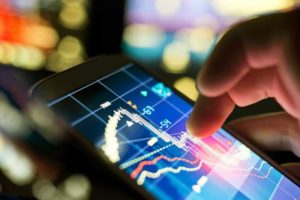As data collection becomes more common, how can higher education institutions leverage the availability of real-time data to improve learning?
Look around today, and you’re likely to spot a Fitbit–a wearable activity tracker that collects data about your daily steps and exercise–or other device on the wrists of more than a few people around you.
As real-time data tracking and analysis becomes more ubiquitous for personal use, how can the higher education community use the Fitbit analogy to improve teaching and learning, to learn about the things that work best in classrooms, and to ensure student success?
During the ASU+GSV Summit, in a session titled “Wearables on Campus: What Higher Education Can Learn from Fitbit,” a panel of higher-ed leaders, moderated by Bridget Burns, executive director of the University Innovation Alliance, discussed how what we know about data use and information can shift our behaviors.
The panelists included:
- Vince Kellen, Ph.D. Senior Vice Provost, Analytics and Technologies at the University of Kentucky
- Fred Singer, CEO, Echo360
- Perry Samson, Professor of Atmospheric, Oceanic and Space Sciences, University of Michigan
- Timothy Renick, Ph.D., Vice Provost, Vice President for Enrollment Management & Student Success, Georgia State University
The wearables-focused discussion covered what faculty can learn from students, where gaps might exist in advising and data collection, and where predictive analytics might head next.
(Next page: 1-4 data use strategies influenced by wearables technology)
1. Student behavior will change based on the knowledge they gain from access to their own data.
“Because we engaged students with the data, we know their behavior changes,” Renick said. “Once we got the students their own information, we found, en masse, that they changed their behavior.”
2. Data tracking makes real-time data use and feedback a possibility.
At the University of Kentucky, the technical infrastructure brings all data from all student systems into a high-speed analytical platform. Working with Echo360 and Instructure’s Canvas, Kellen and his team access real-time streaming data from that platform.
“Now, we’re starting to think about how we can use that real-time data for in-class activity and feedback. How can we get deeper into the classroom and get intervention? We’re working with a handful of faculty on baby steps, but I think this is going to be the more common approach,” Kellen said.
3. Behavioral data is key. Real-time and in-depth data use is only just expanding in the higher-ed community.
“I think we’re in the first or second inning,” Singer said. “Many institutions are beginning to focus on behavioral data, beginning to build models about who a student is, what they’re doing, and based on that, you can have predictive data. We’re starting to see the move toward adding behavioral data. There’s a huge gap in behavioral data [right now].”
4. Clean, accessible data is a must for predictive analytics to have an impact.
Fitbit users are able to quickly access their daily steps and other data to assess if they’re on target to meet goals. Higher education needs a similar model, the panelists said.
“For these systems to work effectively, the data has to be in the right shape, and sadly, in postsecondary education, that’s rarely the case,” Renick said.
(Next page: Strategies 5-8)
5. Build a data sandbox and let researchers access it.
“By collecting data from Echo360, I was able to marry it with data from the SIS and data coming from our LMS. I looked at it all together,” Samson said. “I discovered there are certain things students do during class to indicate the likelihood of success. The hard part is coupling these data together–all have different sources and glitches, and then you have to make a data sandbox. I encourage universities to think about ways to take data, collect it from the LMS and SIS, put it all in one place, make a sandbox, and understand how learning and grades are related to student behaviors.”
Samson is still sorting through data, but his hypothesis is that “those students who saw the data … thought about changing their behavior. When you have data like this, you can do an intervention like this in Week 3, and see what happens in Weeks 4, 5 and 6.”
6. Data will sometimes prove your beliefs false.
“The first thing we’ve had to do is protect against data denial by a massive transparency and democratization of data,” Kellen said. “Data will tell you things, and oftentimes it will tell you that your cherished belief is not true. It takes time for administrators to realize that, sometimes.”
Opening up data access lets people who do access it come to their own conclusions about it, and “that’s been extremely helpful in building the analysis community in a very democratizing way,” he said.
7. The Fitbit analogy is only partially complete.
“Data is usually between the student and faculty,” Singer said. “Systems today aren’t connected, and that’s a problem, and that’s got to change because higher ed will really benefit from it.”
Continuing with the Fitbit analogy, if someone wears a device and isn’t hitting 10,000 steps a day, it might be a good idea to have some form of intervention available to that person to help them meet their goal. The same is true for higher ed, Singer said.
“None of these systems are in place yet, but that’s where it’s going–the system should hook into an advisory system, should include real-time information, and we also need to know what type of student the student is.”
8. IT and education are no longer two separate silos.
“Technology is absolutely critical to support the pedagogical process,” Fred said. “The biggest programs are when the IT and academic departments aren’t unified. Make sure those two are together.”
- Report forecasts a ‘surge’ in GenAI adoption - April 26, 2024
- Where are microcredentials today–and where are they going? - April 22, 2024
- First-generation students are more likely to seriously consider leaving college - April 17, 2024









